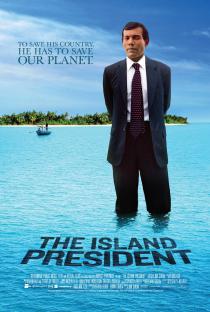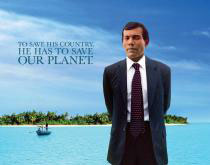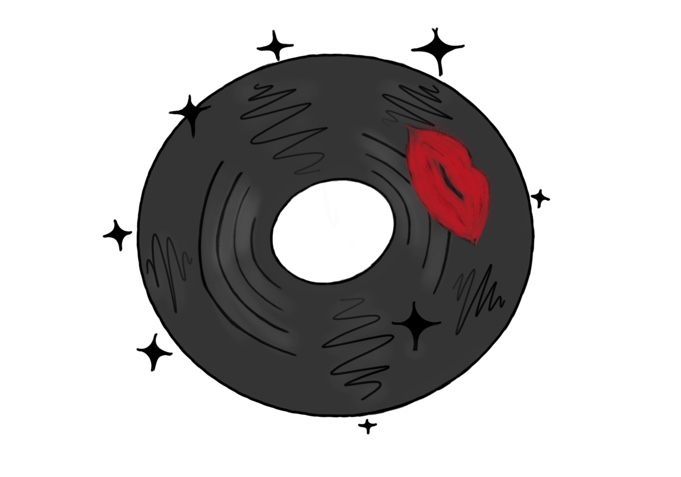
Outspoken and charismatic, former President Mohamed Nasheed, the first democratically elected president of the Maldives, is fighting for the literal survival of an entire nation.
The Maldives, a chain of over 1, 200 islands only about 1.5 meters above sea level, is at the complete mercy of rapidly rising sea levels, which can erode as much as 20 feet of land on any given day. It is contaminating fresh groundwater and making the term “environmental refugees” a reality.
While the content of the documentary was certainly compelling, the filming of the movie and the incredible rare access inside the workings of bureaucracy with heated exchanges between heads of nations providing tension and humor grabs attention. Shot with breathtaking aerial views, the imminent danger of encroaching is visibly evident. There was a collective gasp from the audience I was in when the capital city of the Maldives, Male, was shown on the screen in all of its fragility, looking like a floating city with nothing between it and the vast ocean.
The scoring of the movie captured the beauty and eeriness of the environment, and fans of Radiohead will be very pleased, since the band personally knows the ‘Island President’ and was delighted to have its music prominently featured.
The film highlights Nasheed’s rise to the presidency after twenty years of struggle to instill democracy in a brutally corrupt country, however it is the outcome of the United Nations Climate Change Conference (the Copenhagen summit) that provides the ultimate climax. In an effort to strengthen his case and spread awareness about his nation’s plight, Nasheed is unapologetically blunt, saying things like, “There is no plan B. We all die,” and even at one point holds a cabinet meeting underwater to stir up a media frenzy.
With the future of his country hinging on the 192 countries deadlocked over an agreement on climate change, Nasheed’s struggle gives a human face to a problem so many of us only see as facts and figures.
Catch True/False’s final showing of “The Island President” tomorrow 12:30 p.m. at Missouri Theatre.
By Rena Rong
























































































Anne • Apr 25, 2012 at 5:06 am
Hello and thank you for an excellent website. So-called environmentally induced migration is multi-level problem. According to Essam El-Hinnawi definition form 1985 environmental refugees as those people who have been forced to leave their traditional habitat, temporarily or permanently, because of a marked environmental disruption (natural or triggered by people) that jeopardised their existence and/or seriously affected the quality of their life. The fundamental distinction between `environmental migrants` and `environmental refugees` is a standpoint of contemporsry studies in EDPs.
According to Bogumil Terminski it seems reasonable to distinguish the general category of environmental migrants from the more specific (subordinate to it) category of environmental refugees.
Environmental migrants, therefore, are persons making a short-lived, cyclical, or longerterm change of residence, of a voluntary or forced character, due to specific environmental factors. Environmental refugees form a specific type of environmental migrant.
Environmental refugees, therefore, are persons compelled to spontaneous, short-lived, cyclical, or longer-term changes of residence due to sudden or gradually worsening changes in environmental factors important to their living, which may be of either a short-term or an irreversible character.
Rena Rong • Mar 3, 2012 at 4:44 pm
Thank you for the catch!
Publius • Mar 3, 2012 at 2:28 pm
“Outspoken and charismatic, former President Mohamed Nasheed, the first democratically elected president,”
You should clarify what country he is the first democratically elected president of, because that sentence by itself is a falsehood.